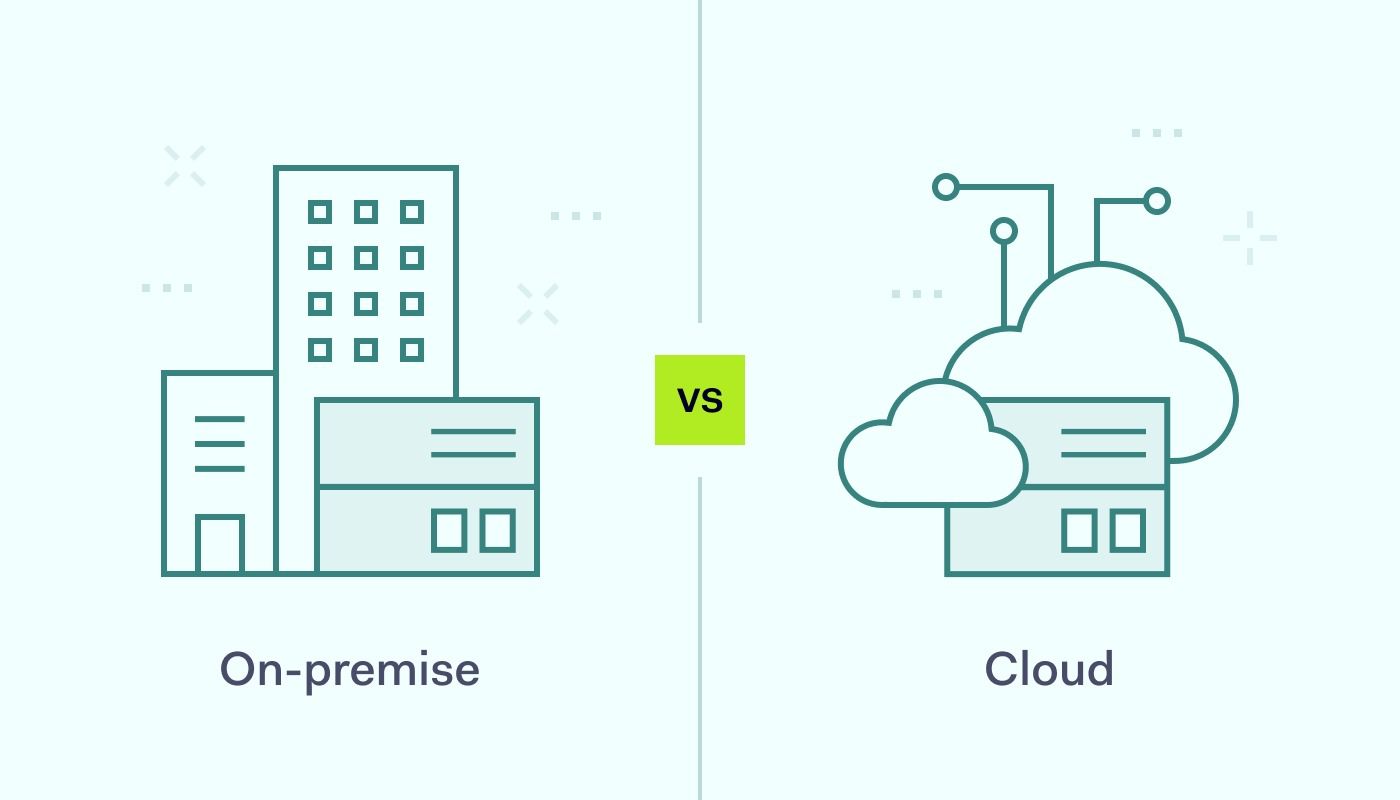On-premise Concept
The term "On-premise" generally refers to hardware or software that is deployed on-site, within the organization. This technology solution allows for internal data storage. On-premise software requires businesses to purchase a license or subscription to install and operate the software within their own systems.

On-premise software is deployed and operated within the company's data center, using the company's own hardware rather than relying on the infrastructure of a cloud service provider. Each server or computer in the on-premise system requires a separate license for the software, typically purchased as a one-time fee for long-term use. After deployment, the responsibility for security and management falls on the business, while the provider only offers post-sales technical support.
Advantages and Disadvantages of On-premise
When considering software deployment, choosing between on-premise and cloud solutions is a critical decision. On-premise solutions, with their software stored and managed on-site, offer distinct advantages in terms of control and security. However, they also come with challenges related to cost, management, and scalability. Analyzing the advantages and disadvantages of this model helps businesses make a choice that aligns with their needs and development strategy.
Advantages of On-premise
- Full Control: Businesses have complete control over their data, including access, management, and operation. This is particularly important for organizations with high security requirements and privacy concerns, ensuring that data is not accessed without authorization.
- Strict Security: With on-premise systems, data is stored within internal infrastructure and is not exposed to third parties. This allows businesses to build and adhere to strict security policies while enhancing control.
- Independence in Access: Since on-premise systems do not rely on internet connectivity, users can access them quickly and reliably without being affected by network speed or connection issues.
Disadvantages of On-premise
- High Infrastructure Costs: Businesses face significant costs to deploy an on-premise system, including physical space, servers, power consumption, and supporting equipment. These costs are often much higher compared to other software solutions.
- Requires Specialized IT Team: Maintaining and managing an on-premise system requires a professional IT team to oversee and enforce security policies and address operational issues.
- Limited Remote Access: Because on-premise systems are not dependent on the internet, users can only access them when they are on-site or near the system. This limits flexibility and remote access, which requires complex configuration and is less convenient.
- Ongoing Maintenance Costs: During operation, costs for maintenance, updates, and system adjustments may continuously arise, especially if the business wants to add features or upgrade software to ensure stable performance.
Comparing On-premise and Off-premise Solutions
On-premise and off-premise refer to two methods of managing applications. On-premise software is managed internally by company staff, and any issues are handled promptly. In contrast, off-premise software is often hosted on the cloud or accessed via the Internet, operated and managed by a third-party provider. All troubleshooting for off-premise software is handled by the provider's team. Therefore, off-premise applications are often referred to as "cloud software."
The following is a direct comparison of the two software deployment methods based on key factors to help businesses choose the most suitable solution.
Factor | On-premise | Off-premise |
|---|---|---|
Deployment Time | Typically requires a significant amount of time for deployment and customization. | Quickly and easily deployed via the internet. |
Example | SAP, Microsoft Office installed locally, SharePoint 2013, Adobe Creative Suite, on-premises web trends. | Google Drive, Microsoft Office 365, Adobe Creative Cloud, AWS, and on-demand web trends. |
Number of Users | Depends on the number of servers and available infrastructure. | Easily scalable, no limit on the number of users. |
Contract Type | One-time purchase license with high initial costs | Subscription-based with monthly or annual payments, with regular costs. |
Functionality | Customizable according to the company's requirements. | Dependent on the service provider, less customizable. |
Advantages | Comprehensive system control, suitable for businesses with high security requirements. | Flexible, remote access possible, easy to upgrade. |
Disadvantages | High initial hardware and infrastructure investment, requires a professional IT team. | Dependent on the provider, risk of losing control over security. |
Security | The company manages security independently, not relying on third parties. | The service provider is responsible for security, with potential risks from third parties. |
Optimal Comparison: Choosing Between On-Premise and Cloud for Businesses
Over the past decade, the software market has witnessed a significant shift from on-premise solutions to cloud solutions. Although this transition is ongoing, the change remains gradual. Since 2016, many businesses and large organizations have continued to maintain traditional information management systems with on-premise software. However, by 2020, approximately 70% of businesses had started planning for or implementing cloud-based software solutions.

Factor | On-premise | Cloud |
|---|---|---|
Deployment | Systems and software are installed directly on the enterprise's infrastructure. | Software and data are stored on remote servers managed by the cloud service provider. |
Cost | The business is responsible for ongoing costs related to server hardware, energy consumption, and physical space. | The business pays for the resources it uses without incurring maintenance costs; expenses can be adjusted based on usage. |
Control | The business has full control and management over the software system and infrastructure. | The service provider controls the infrastructure, while the business manages its own applications and data. |
Security | On-premise software provides superior levels of security and privacy, making it suitable for businesses or organizations with sensitive data that cannot be disclosed, such as government agencies or banks. | Security remains a significant challenge in cloud computing environments, requiring service providers to commit to ensuring absolute information security for their clients. |
Market Development Trends
In line with this trend, the market has witnessed an increase in the number of cloud software solution providers such as Microsoft, Oracle, Salesforce, SAP, and AWS. These solutions are increasingly favored for their ability to support achieving specific business goals. Although cloud solutions are gradually replacing on-premise software, the value and benefits of on-premise software remain undeniable in the current market.
Conclusion
The distinction between on-premise and cloud highlights the importance of selecting a technology solution that aligns with business needs. While on-premise offers comprehensive control and high security, it requires significant initial investment and technical expertise. Conversely, cloud solutions, with their flexibility, ease of scalability, and adaptable cost structure, are becoming a strong trend, especially for businesses seeking speed and convenience in technology deployment.
The shift from on-premise to cloud clearly reflects the growing digitalization trend within businesses, as organizations need to optimize operations and adapt to market fluctuations. However, the choice between the two solutions depends on various factors, including security requirements, cost, scalability, and management.
Salesforce
Salesforce CRM is one of the leading customer relationship management (CRM) platforms globally, widely used by both large and small organizations. With its flexible features and applications, Salesforce helps businesses enhance customer relationships, optimize sales processes, and drive revenue growth by providing powerful management tools and insights.
Key features of Salesforce that support effective business management include: marketing management; customer relationship management; sales management; and integration with other applications and systems.




